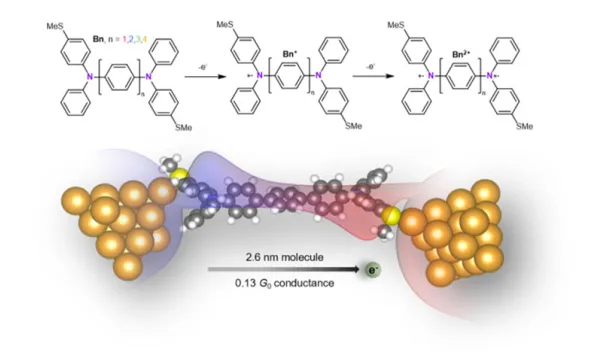
Materials researchers build longest highly conductive molecular nanowire
Researchers at Columbia University, supported by a grant from the U.S. National Science Foundation, engineered a nanowire 2.6 nanometers long with quasi-metallic properties and conductance that increases with the wire's length. The breakthrough could transform molecular electronics.
Using chemical design and experiments, the team of engineers and chemists created a conducting pathway through the molecules and achieved a system that has increasing conductance with longer wire length.
"What's really exciting is that our wire had a conductance at the same scale as that of gold metal-metal point contacts, suggesting that the molecule itself shows quasi-metallic properties," said Latha Venkataraman, co-author of a paper reporting the results. "This work demonstrates that organic molecules can behave like metals at the single-molecule level, in contrast to what had been done in the past where they were primarily weakly conducting."
The team measured conductivity and discovered the longer molecules had higher conductance until the length of the wire exceeded 2.5 nanometers. The researchers are now working on developing even longer highly conductive nanowires. The discovery will advance molecular electronics and nanotechnology, the scientists said.
